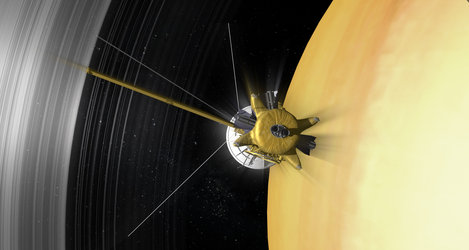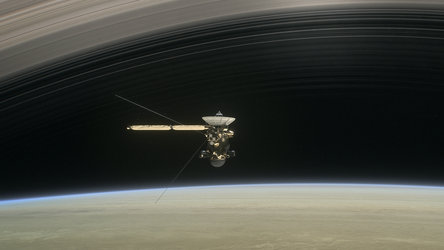Accept all cookies Accept only essential cookies See our Cookie Notice

About ESA
The European Space Agency (ESA) is Europe’s gateway to space. Its mission is to shape the development of Europe’s space capability and ensure that investment in space continues to deliver benefits to the citizens of Europe and the world.
Highlights
ESA - United space in Europe
This is ESA ESA facts Member States & Cooperating States Funding Director General Top management For Member State Delegations European vision European Space Policy ESA & EU Space Councils Responsibility & Sustainability Annual Report Calendar of meetings Corporate newsEstablishments & sites
ESA Headquarters ESA ESTEC ESA ESOC ESA ESRIN ESA EAC ESA ESAC Europe's Spaceport ESA ESEC ESA ECSAT Brussels Office Washington OfficeWorking with ESA
Business with ESA ESA Commercialisation Gateway Law at ESA Careers Cyber resilience at ESA IT at ESA Newsroom Partnerships Merchandising Licence Education Open Space Innovation Platform Integrity and Reporting Administrative Tribunal Health and SafetyMore about ESA
History ESA Historical Archives Exhibitions Publications Art & Culture ESA Merchandise Kids Diversity ESA Brand Centre ESA ChampionsLatest
Space in Member States
Find out more about space activities in our 23 Member States, and understand how ESA works together with their national agencies, institutions and organisations.
Science & Exploration
Exploring our Solar System and unlocking the secrets of the Universe
Go to topicAstronauts
Missions
Juice Euclid Webb Solar Orbiter BepiColombo Gaia ExoMars Cheops Exoplanet missions More missionsActivities
International Space Station Orion service module Gateway Concordia Caves & Pangaea BenefitsLatest
Space Safety
Protecting life and infrastructure on Earth and in orbit
Go to topicAsteroids
Asteroids and Planetary Defence Asteroid danger explained Flyeye telescope: asteroid detection Hera mission: asteroid deflection Near-Earth Object Coordination CentreSpace junk
About space debris Space debris by the numbers Space Environment Report In space refuelling, refurbishing and removingSafety from space
Clean Space ecodesign Zero Debris Technologies Space for Earth Supporting Sustainable DevelopmentLatest
Applications
Using space to benefit citizens and meet future challenges on Earth
Go to topicObserving the Earth
Observing the Earth Future EO Copernicus Meteorology Space for our climate Satellite missionsCommercialisation
ESA Commercialisation Gateway Open Space Innovation Platform Business Incubation ESA Space SolutionsLatest
Enabling & Support
Making space accessible and developing the technologies for the future
Go to topicBuilding missions
Space Engineering and Technology Test centre Laboratories Concurrent Design Facility Preparing for the future Shaping the Future Discovery and Preparation Advanced Concepts TeamSpace transportation
Space Transportation Ariane Vega Space Rider Future space transportation Boost! Europe's Spaceport Launches from Europe's Spaceport from 2012Latest

Listening for Cassini
Thank you for liking
You have already liked this page, you can only like it once!
ESA’s sensitive tracking antennas at New Norcia, Western Australia, and Malargüe, Argentina (seen here in 2012), are being called in to help gather crucial science data during Cassini’s last months in orbit, dubbed the Grand Finale.
The mission will end on 15 September, when Cassini plunges into Saturn’s atmosphere, bringing to a close one of the most successful exploration endeavours ever (more information).
The craft isn’t exiting meekly, however, and its Grand Finale orbits are proving to be immensely valuable. On 26 April, Cassini made the first-ever daring dive between Saturn and its beautiful and enigmatic ring system.
Starting next week, ESA ground stations will work with NASA’s Deep Space Network to record radio signals transmitted by Cassini across 1.6 billion km during 22 communication ‘passes’.
The recorded signals will serve important new scientific purposes with the strong involvement of European teams.
During its final 22 orbits, the Cassini orbiter is approaching Saturn and its ring so close that the tiny wobbles in Cassini’s orbit can be measured to separate the gravitational contribution of the planet and its main rings. From those gravity measurements, allowing radial velocity changes of the spacecraft as tiny as 0.05 mm/s to be measured, the total mass of Saturn’s ring can be inferred. Scientists will also gain a better understanding of the interior structure of Saturn.
In addition, during certain part of the orbits, the radio signal will be transmitted directly through the rings and Saturn’s upper atmosphere, allowing valuable information on their composition and material distribution to be retrieved.
“We are just now getting into a new mode of radio science, with much more accurate measurements of gravitational effects compared to previous where the effects of ring density on the radio signals were the main topic of study," says Daniel Firre, the service manager at ESA’s mission control centre in Darmstadt, Germany.
More information
-
CREDIT
ESA/S. Marti -
LICENCE
CC BY-SA 3.0 IGO or ESA Standard Licence
(content can be used under either licence)

Cassini crossing rings

Mind the gap

Cassini in orbit

Cassini between Saturn and the rings















 Germany
Germany
 Austria
Austria
 Belgium
Belgium
 Denmark
Denmark
 Spain
Spain
 Estonia
Estonia
 Finland
Finland
 France
France
 Greece
Greece
 Hungary
Hungary
 Ireland
Ireland
 Italy
Italy
 Luxembourg
Luxembourg
 Norway
Norway
 The Netherlands
The Netherlands
 Poland
Poland
 Portugal
Portugal
 Czechia
Czechia
 Romania
Romania
 United Kingdom
United Kingdom
 Slovenia
Slovenia
 Sweden
Sweden
 Switzerland
Switzerland

























